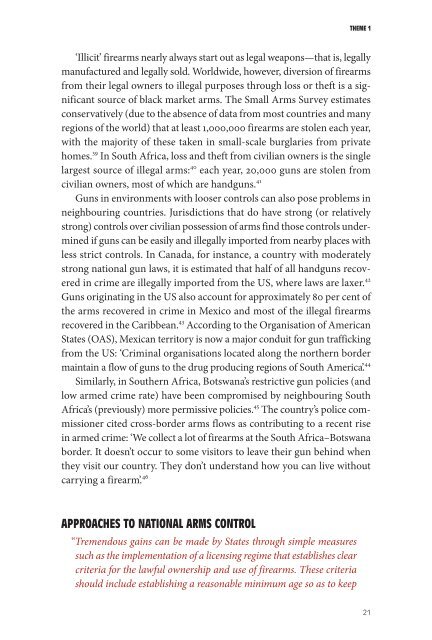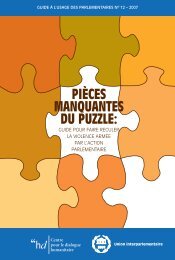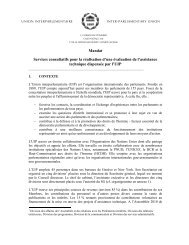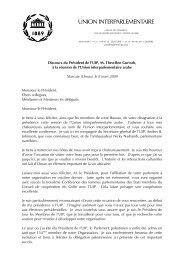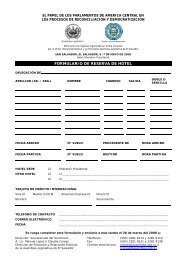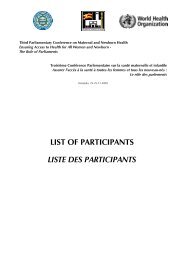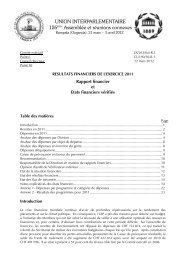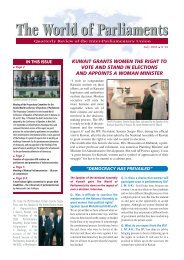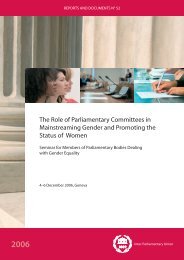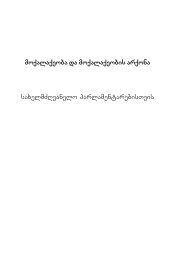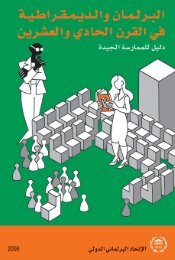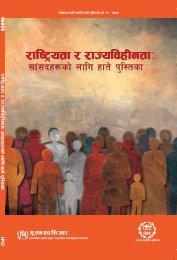MISSING PIECES - Inter-Parliamentary Union
MISSING PIECES - Inter-Parliamentary Union
MISSING PIECES - Inter-Parliamentary Union
You also want an ePaper? Increase the reach of your titles
YUMPU automatically turns print PDFs into web optimized ePapers that Google loves.
THEME 1<br />
‘Illicit’ firearms nearly always start out as legal weapons—that is, legally<br />
manufactured and legally sold. Worldwide, however, diversion of firearms<br />
from their legal owners to illegal purposes through loss or theft is a significant<br />
source of black market arms. The Small Arms Survey estimates<br />
conservatively (due to the absence of data from most countries and many<br />
regions of the world) that at least 1,000,000 firearms are stolen each year,<br />
with the majority of these taken in small-scale burglaries from private<br />
homes. 39 In South Africa, loss and theft from civilian owners is the single<br />
largest source of illegal arms: 40 each year, 20,000 guns are stolen from<br />
civilian owners, most of which are handguns. 41<br />
Guns in environments with looser controls can also pose problems in<br />
neighbouring countries. Jurisdictions that do have strong (or relatively<br />
strong) controls over civilian possession of arms find those controls undermined<br />
if guns can be easily and illegally imported from nearby places with<br />
less strict controls. In Canada, for instance, a country with moderately<br />
strong national gun laws, it is estimated that half of all handguns recovered<br />
in crime are illegally imported from the US, where laws are laxer. 42<br />
Guns originating in the US also account for approximately 80 per cent of<br />
the arms recovered in crime in Mexico and most of the illegal firearms<br />
recovered in the Caribbean. 43 According to the Organisation of American<br />
States (OAS), Mexican territory is now a major conduit for gun trafficking<br />
from the US: ‘Criminal organisations located along the northern border<br />
maintain a flow of guns to the drug producing regions of South America’. 44<br />
Similarly, in Southern Africa, Botswana’s restrictive gun policies (and<br />
low armed crime rate) have been compromised by neighbouring South<br />
Africa’s (previously) more permissive policies. 45 The country’s police commissioner<br />
cited cross-border arms flows as contributing to a recent rise<br />
in armed crime: ‘We collect a lot of firearms at the South Africa–Botswana<br />
border. It doesn’t occur to some visitors to leave their gun behind when<br />
they visit our country. They don’t understand how you can live without<br />
carrying a firearm’. 46<br />
APPROACHES TO NATIONAL ARMS CONTROL<br />
“Tremendous gains can be made by States through simple measures<br />
such as the implementation of a licensing regime that establishes clear<br />
criteria for the lawful ownership and use of firearms. These criteria<br />
should include establishing a reasonable minimum age so as to keep<br />
21


